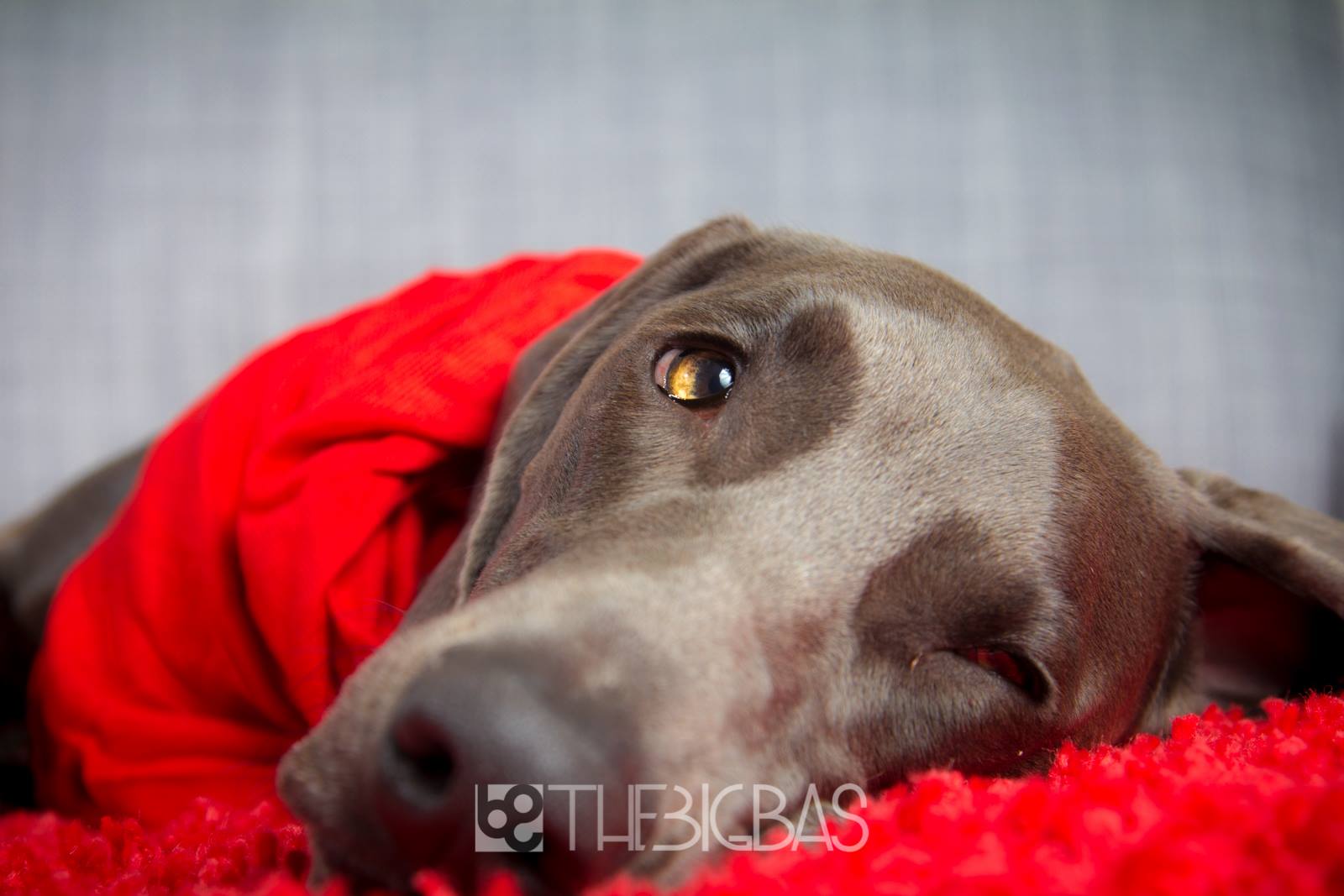Ocha
-
 OchaParticipant
OchaParticipantMy dog was not good at retrieving. As you said she would go very fast to get the ball but once she had it she preferred to sit down and chew on the ball (never coming back). We read some tips for teaching dogs to retrieve (apparently this is not something they all just do). The main idea is that we wanted her to play with US and use the ball as an instrument for her to play with us. If she just wanted to chew on the ball, then the ball was the important thing and not the playing (which apparently is not what you want when playing outside as YOU always want to be the interesting thing). So we started with tying a long rope to her collar and throwing the ball at distances in range with the rope. Once she got the ball, we would say “fetch” and if she decided to lay down and chew we would made her come to us by using the rope. Once she was with us, we would offer a treat and as a consequence she would drop the ball. We would give her the terat, act excited and back to trowing the ball, and then repeat and repeat. The idea is the same as ANY other training: you teach them what the word mean and then you have to make sure you have a way to make them do it , which in this case is the rope, and then you reward them. Now she loves retrieving as she is perfect at bringing the ball back every single time, even with distractions. Retrieving in the water is her favorite thing (she used to hate swimming).
 OchaParticipant
OchaParticipantAll those things sound like normal puppy behaviour to me and specially Weimaraner puppy behaviour. I think your expectations were probably more in sync with a smaller and less energetic dog breed. Our puppy had those and MORE things that were driving us crazy as she also had some behavior issues. I would say that at 6 months she is not yet close to be a teenager but instead just full on the puppy stage. One thing they always tell you when considering a weimaraner is that they play rough and run fast so it is super normal for them to knock kids down. Will this change? Yes, but you need to continually work with her and also know that she still have a bit more time to start maturing. Big dogs take longer for this. My dog is over 2 and we are definitely having more fun with her now and seeing the rewards of the intense and hard training we did and continue doing these 2 years. They have so many different stages that is difficult to tell you when she will be out of this one. I also felt my dog was not giving anything back and was a lost rebel. We are getting lots back now.
My advice is to keep working with her. Some dogs are just fine with a regular class (as far as you TRULY work with them at home A LOT and reinforce all the training). Reinforcing the training and setting up rules that you are certain can reinforce (you will learn this in true behavior classes but most like not in petsmart type of classes, which only teach you very basic commands and things) are critical at this stage.
I cannot say enough how important good training is for these dogs. Not sure what type of class you are in but not all classes are good. We had a couple of pretty cookie-cutter standard classes that did not work that well for our dog. We had to do our research, and read books, and find a truly good trainer/behaviorist. We did classes and home reinforcement for about 1 year and the second year has been only us working at home with her (outside, inside, in the park, everywhere and in every situation). I can imagine it is much harder for you with 2 kids but i recommend you work with your dog as much as you can. If you just wait for her to grow but do not give priority to training and reinforcing good behaviors (which you can only learn from a trainer or from good books) she will calm down (will be less hyper) BUT she will still have bad habits.
I encourage you to not give up on her, put some good work on training, and you will have a good dog in the future. Good luck on your journey and all the best for you!
 OchaParticipant
OchaParticipantOur dog had exactly the same bites some summers past. Doctor said they were fly bites. They went away on their own and Ocha did not seem to care about them. We did not have to deal with them too frequently (even though we spend a lot of time on the woods) so we never put any repellent..
 OchaParticipant
OchaParticipantOne thing we learnt in classes that helped a lot with some jumping and overly excited behaviors was to step on the leash (very close to the collar end) so they have no option but to calm down and stay in place. I guess this is similar to grabbing the leash with your hands and pinning them down but with the advantage that you are just using your feet and you can still talk to somebody or just ignore them as you are just standing in there but limiting their range of motion.
 OchaParticipant
OchaParticipantShane,
At the beginning I also did not understand why it was so important that breeders do all the stuff they do. Initially it sounded “legalistic” to me when they were talking about all the pedigree, registration, tests, etc as it all sounded to me as related to rules. As I read and got more familiar with the dog world and after having a particularly difficult dog that came from a puppy mill, I thing i understand the basics now.
This is my most humble understanding of it: The whole thing about registration, showing, pedigree, genetics, etc is not just for the sake of it. By tracking all the family history they make sure they are breeding dogs that come from reputable family lines, meaning those dogs conform to the breed standards, have good temperaments, and have been extensively tested for any genetic health problems.
Most reputable breeders show their dogs in competitions and in that way, you know their dogs truly conform to the breed standards as many of them win a lot of those competitions (meaning they are “good” weimaraners, at least physically i guess but also you probably cannot have an aggressive dog going to all those shows so it tells you something about the overall aspects of the dog). The health tests I think speak for themselves. Good breeders will NEVER breed dogs that have any health issues as there is a high chance those problems will be transmitted to the puppies (even when some of the issues might not show up until later on in their lives). Temperament is a HUGE deal too and one of the reason a lot of dogs end up in shelters. A reputable breeder besides picking dogs that are healthy and conform to the breed, also will only breed those that do not show any signs of behavioral problems to try to minimize any chance of that in the puppies. Also, there are things you need to do from the time they are born to the time they go to their forever families such that the dogs are well socialized, etc. Experience breeders know all these details and make sure their puppies get well prepared to face the world.
I am sure there are many other considerations taken into account at the time of picking the dogs they will be breeding each time but as you can see it is not as simple as picking 2 dogs that look healthy and that seem to behave. Obviously there is a lot of research and time that goes into learning to become a good breeder (for a lot of them it is a family business so they learnt from their parents, and their parents from theirs, etc). I don’t think that means somebody cannot get into breeding but I do think they need to be trained and a lot of learning needs to go into it in order to do it right. Otherwise, even with good intentions you can’t never know how the puppies will turn out as they get older (behavioral, health issues, etc).
I am sorry for the hostility you have felt and I hope that if you still want to go this road, you go ahead and learn all the stuff, even get in contact with current breeders, such that you can be confident you are conforming to the proper ways of breeding. I am guessing it might take some time to be in good shape to actually do this right but if it is in your heart, I wish you all the best.
 OchaParticipant
OchaParticipantBecause there is not needed transition between raw and dry, you could (if you want) do 100% raw and then still bring your dry food when backpacking. Ocha cannot have dry food no matter what (instant stomach upset) so when car camping we bring her raw food in a cooler, and when backpacking we bring “Honest Kitchen” (dehydrated) food in ziploc bags.
 OchaParticipant
OchaParticipantWe have a ruffwear bag too. This one has smaller pockets than the one showed on the previous pictures and comes with 2 plastic (flatypus style) water bottles inside. No problems with being on or off leash with this one. Hopefully you can see the pictures. We bought it at REI.
Attachments:
You must be logged in to view attached files. OchaParticipant
OchaParticipantI have heard that there is no problem with alternating raw and dry. The only thing you should not do is to mix them on the same meal as they digest differntly. Because he is 1 year old, you could probably do 2 meals (one dry and one raw. When we switch to raw, we did cold turkey and her stomach never got upset. I have heard of various people that do half raw and half dry, so you should be fine.



